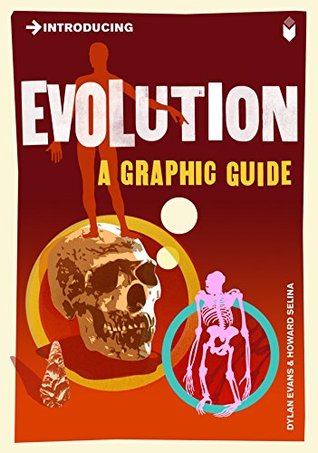More on this book
Kindle Notes & Highlights
by
Dylan Evans
Read between
February 22 - July 17, 2020
the initial cell is not specialized. It is a stem cell, with the potential to give rise to cells of any type.
In order to grow into a fully-formed adult, the growing organism must make sure that the right kinds of cell are generated in the right order.
The second condition for natural selection is that the copying process is not perfect.
Half the genes come from the father and half from the mother. But occasionally, a gene is not copied correctly. The offspring begins life with a new gene not possessed by either parent. This new gene is called a mutation.
If mutation never happened, there could be no evolution and no natural selection.
Every organism would be a perfect copy of its parents, and species would indeed be fixed. It is
only because of the occasional copying error that species can change over time and a...
This highlight has been truncated due to consecutive passage length restrictions.
The third condition for natural selection states that the copying errors must affect the ability of offspring to make copies of themselves.
If there is a theory about how the trait in question helps its bearers to survive or reproduce, and this theory
matches with the evidence, this favours the idea that the trait is an adaptation rather than a by-product.
only beneficial mutations are preserved.
genetic differences between individuals can cause those individuals to behave differently.
Eukaryotes are one of the two “empires” into which biologists classify all living things on earth. The other empire is known as the prokaryotes.
In all eukaryotic cells, there are little structures called mitochondria. These provide the energy for the rest of the cell.
All prokaryotes are single-celled
organisms.
all prokaryotes are asexual, while many eukaryotes reproduce sexually.
All organisms make copies of themselves (have offspring), but not all of them do it sexually.
In asexual reproduction, one parent gives rise to a new cell which then develops into a new organism on its own, without the need for fertilization. This is called parthenogenesis, or “virgin birth”.
In species that reproduce without sex, each offspring is genetically identical to its single parent (barring the occasional
mutation). In other words, each offspring is a clone of its parent.
the Russian biochemist Aleksandr Oparin (1894–1980) and the Scottish geneticist J.B.S. Haldane (1892–1964) proposed, in the 1920s, that energy from the ultraviolet sunlight and from lightning discharges might have synthesized organic compounds as it passed through the primitive atmosphere.
Haldane thought that these compounds would be washed into the sea.
In 1953, the American chemist Stanley Miller (b. 1930) tested this idea by passing an electric current through a chamber containing water, methane and ammonia. Just as predicted, a wide range of organic compounds was formed. These organic compounds could have come together to form the first life forms.
These ideas suggest that the first life forms may have arisen near the surface of the sea. More recently, however, some biologists have suggested that life first emerged far below the surface, near the hydrothermal vents found at the sea-bed. Hydrothermal vents are places where underwater volcanic activity produces plumes of high-temperature water which rise from the sea-bed.
These organisms are called hyperthermophiles, because they require high temperatures to survive. Perhaps the first life forms were hyperthermophiles.
Perhaps life first arose on some other planet, and traces of it were carried to earth on, say, a meteorite. This idea is called panspermia, which means “seeds everywhere”.
There is even hope that primitive bacteria may be found on Europa, one of the moons of Jupiter. And there is increasing evidence that life once existed on Mars.
Evolution is not just about the birth of new species. It is also about the death of old species, or “extinction". A species can go extinct for many different reasons.
Every year, a few new species come into existence, and a few old species go extinct. But the number of new species is usually slightly more than the number of species going extinct.
The theory of evolution by natural selection is not only at the heart of modern biology, but is becoming increasingly important in many other fields, from artificial intelligence and psychology to philosophy, anthropology and even sociology.
The Blind Watchmaker, by Richard Dawkins
Darwin’s Dangerous Idea: Evolution and the Meanings
of
Life, by Daniel C...
This highlight has been truncated due to consecutive passage length restrictions.
Evolution, by Mark Ridley
Evolutionary Genetics, by John Maynard Smith (get the second edition: Oxford University Press, 1997). This is another undergraduate textbook that can also be read by lay readers who are willing to put in some effort.
The Selfish Gene, by Richard Dawkins
The Ant and the Peacock, by Helena Cronin (Cambridge University Press, 1992). This book gives a very clear account of how evolutionary biologists solved the problem of biological altruism (the ant) and the puzzle of sexual selection (the peacock).
The Variety of Life: A Survey and a Celebration of all the Creatures that have Ever Lived, by Colin Tudge (Oxford University Press, 2000). This clearly written and well-illustrated book covers the whole tree of life,
Introducing Evolutionary Psychology, by Dylan Evans and Oscar Zarate (UK: Icon, 1999; US: Totem, 1999).
What can I say? Another cartoon book by me! Oscar’s
How the Mind Works, by Steven Pinker ...
This highlight has been truncated due to consecutive passage length restrictions.
The Mating Mind, by Geoffrey Miller (UK: Heinemann, 2000; US: Doubleday, 2000). Miller presents his alternative


